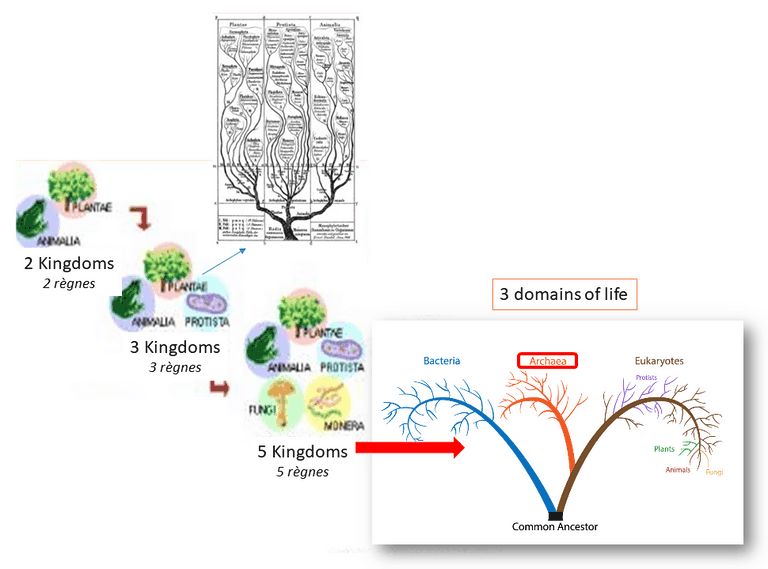Archaea, what is it?
Microbes? Yes, but...

This picture shows Carl Woese. He has revolutionized our view of the microbial world, and ultimately made more modest our perception of our place in life / on earth: his works opened new frontiers, showing us to be aware of the vastness and diversity of the microbial world, but also of our lack of understanding of this "other world":
"Imagine walking out in the countryside and not being able to tell a snake from a cow from a mouse from a blade of grass... That's been the level of our ignorance."
In particular, he determined that life was divided into 3 major lineages (the 3 Domains of the life, represented in the figure below) resulting from one common ancestor: Eukayotic cells (domain Eukarya or sometimes Eucaryota), the bacteria (domain Bacteria, previously Eubacteria, which are the true bacteria) and Archaea (Archaea, previously archaebacteria).
Initial Works on this topic were published in 1977. Forty years later, "Archaea" is still a term and a content which stay mainly unknown for the majority, unfortunately encompassing also people from the scientific and medical community.
You can find more information about him, including Wikipedia here (in french) or here (in English). He died at the end-of-the-year 2012: the indifference of his death inspired this mood bulletin from Patrick Forterre (in French), desesperatly currently still timely.
A view of the living beings that changed overtime...

... to give a current representation in 3 Domains
Why this name?
They were first called Archaeobacteria, which does not help to distinguish them from bacteria, while the bacteria were called Eubacteria = "true bacteria"). Nevertheless, this name of archeobacteria reflected commonly shared ideas:
as for the (eu) bacteria, the archaea do not have a visible nucleus delimited by a membrane: thus, Archaea and Bacteria are prokaryotes; Let's just admit that grouping organisms on this sole criterion ("true" nucleus = eukaryotes versus prokaryotes) has contributed to mask marked differences between bacteria and archaea, whereas the latter have many analogies / similarities with eukaryotes. .
- many archaea were first found in environments that were long believed to be unadapted for life: Examples include living capacities at temperatures (sometimes above 100 ° C), pH, saline concentrations or extreme pressures, ie environmental conditions that are presumed to be unsuitable for any form of life. In fact, many of archaea are extremophiles.


